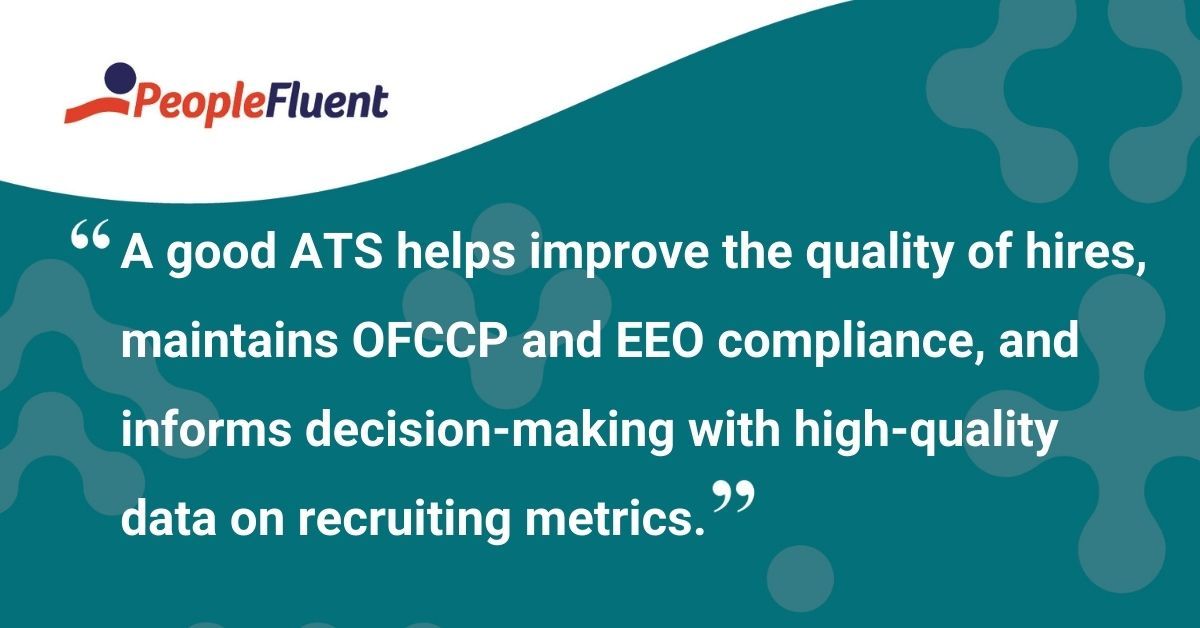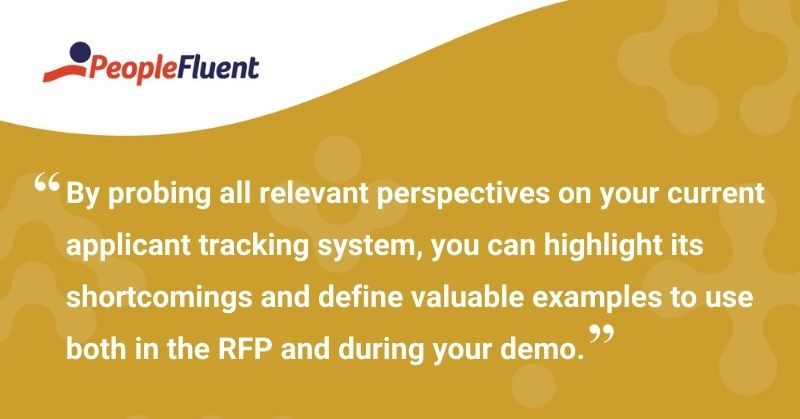Published: Mar 24, 2021Time to read: 8mins Category: Insights
6 Ways to Choose the Right Applicant Tracking System for Your Organization
Applicant tracking systems are powerful recruitment software applications that help organizations attract, engage, select, hire, and onboard employees. A good ATS also helps improve the quality of hires, maintain compliance, and inform decision-making with quality recruiting data. Here are some tried-and-tested ways to choose the right ATS for your recruitment needs.
Scan your favorite business, leadership, or HR industry publication and you’re bound to find an article on the myriad challenges facing enterprise recruiting teams.
Some cite an increased need to hire for diversity as well as upskilling and reskilling existing talent for internal mobility. Others point to enhancing virtual recruiting practices.. And don’t forget employer branding, inbound recruiting, and the candidate experience.
If your applicant tracking system (ATS) isn’t helping your recruiting team keep up with these trends and solve for their evolving challenges, it’s time to look for a new one.
What Can an Applicant Tracking System Do for Your Organization?
Applicant tracking systems are powerful software applications designed to help organizations attract, engage, select, hire, and onboard employees more efficiently. A good ATS also helps improve the quality of hires, maintain OFCCP and EEO compliance, and informs decision-making with high-quality data on recruiting metrics.
Like any HR software system, evaluating and choosing the right ATS can be a daunting undertaking. Here are six insider secrets from our experts in recruiting software to make the process easier on your HR team.
KEEP READING | ‘The Evolution of Recruiting: From the Digital Revolution to a More Human Approach’

1. Simplify Your Request for Proposals (RFP)
It may seem counterintuitive, but even for a major technology purchase like an applicant tracking system, your RFP need not be meticulously detailed to get the right information from recruiting software vendors.
Yes, a checklist of required features and technical specifications will help you compare technologies. But taken too far, this approach can bog down your evaluation process. It can also create a risk that you’ll miss out on elegant solutions to what seem like complicated problems.
Worse, vendors whose solutions aren’t a good fit can hide behind excessive details in an RFP and dodge more important questions. This wastes the valuable time of your selection team. Often, the better approach is to list your pain points and challenges and ask vendors to make a case for their technology as your best-fit solution.
So frame the requirements in your RFP as questions:
- How can your recruiting solution solve the following business problems (e.g., high-volume hiring, post-and-fill, continuous sourcing?
- How can your ATS address the following challenges in our recruiting process (e.g., automation, time-to-fill, recruiter/hiring manager collaboration, social recruitment)?
- How configurable is your ATS (e.g., single vs multiple workflows)?
- How does your recruitment solution deliver a winning candidate experience?
- How does your ATS convey our employer brand?
- Describe the capabilities of your system to support employee onboarding.
- Describe the reporting capabilities of your system and list the recruiting metrics it delivers.
- How does your system manage compliance with employment laws and internal policies and procedures that govern recruiting and hiring?
- How does your ATS manage recruiting compliance?
ALSO READ | '4 Tips to Improve Candidate Experience for High-Volume Recruiting'
2. Define What Best Fit Means for You
With these broad questions defined, vendors will have ample opportunity to present the value of their technology—by feature and as a holistic system that powers your recruiting processes. Equally important, these questions create a roadmap for your selection team so they can define what a best fit recruiting solution looks like for your organization.
To capture the specific challenges you need an ATS to resolve—business goals, recruiting processes, employer brand, candidate experience, recruiting metrics—reach out to the people with the ground truth.
Obviously, this begins with your talent acquisition leaders and recruiting team. But don’t forget the importance of other perspectives, such as hiring managers and recent hires. Each group offers valuable insight into the strengths and weaknesses of your current recruiting software, which should inform requirements for your future solution. For example:
- Talent acquisition leaders know what the CHRO needs. They can frame current and projected business problems and where executive expectations for HR and recruiting are falling short.
- Your recruiters use your current system every day. They know where it’s creating inefficiencies.
- Your hiring managers use it less frequently. They know whether it’s intuitive and user friendly.
- Recent new hires will remember their experience as a candidate. They can tell you whether and how your current technology made interview scheduling easier as well as if it was difficult to apply or communicate with their recruiter, and whether it presented a positive employer brand.
By probing all relevant perspectives on your current applicant tracking system, you can highlight its shortcomings and define valuable examples to use both in the RFP and during your demo.

RELATED READING | 'Choosing Your Next Enterprise ATS: 4 Must-Have Features'
3. Prepare IT and Procurement for Their Role in the Selection Process
For most enterprise organizations, IT and procurement are accountable for selection and implementation of software and systems. They may not know much about recruiting, but they are experts in technology selection and implementation. And they will come to your project with their own list of requirements—chiefly security, risk, compliance, budget, and support for implementation.
Red flags associated with any of these requirements can quickly ground your selection process. To avoid this all-too-common outcome, engage IT and procurement teams early in your project. Prepare and deliver contextual information in a pre-kickoff meeting. Explain the business case for acquiring a new applicant tracking system. Define the value in terms of:
- Productivity for recruiters and hiring managers
- Process automation
- Compliance management and risk mitigation
- Company-wide productivity gained by faster time-to-fill for open positions
- Projected decrease in cost-per-hire
- Project impact of better onboarding on short-term turnover
- Ease of integration with other HR systems and third-party software solutions
Give your IT and procurement colleagues the opportunity to ask questions and share concerns or insights about competing technology projects, budget constraints, and team bandwidth. It’s also important to ask both IT and procurement teams to define their role in helping select the right ATS for your organization.
With this information, you can assign clear responsibilities at each step, ensuring each department has an opportunity to provide inputs into the RFP, to review the document before it’s published and distributed to vendors, to help narrow down your list of vendors based on their absolute criteria, and to participate in product demos.
By taking a collaborative approach from the beginning, you can streamline the software selection process and avoid major delays. You also bring the valuable perspective of your colleagues to bear on your team’s decision, helping to ensure your next ATS will meet your HR and business needs, now and in the future.
HANDPICKED FOR YOU | 'How to Implement an ATS: 13 Things You Need to Accelerate ROI'
4. Make the Most of Each Demo
Like looking under the hood of a car, a software demo is your opportunity to make sure the solution has what you need. And like trying on a new suit, it’s the best way to determine whether it’s the best fit.
Your team—and you should include the entire selection team in the demo—should come prepared with criteria lists and questions. The rep should show you how their software works from every perspective, letting you evaluate the user experience and features/functions for:
- Talent acquisition managers
- Recruiters
- Candidates
- Hiring managers
Ask for a walkthrough of how each vendor’s recruitment solution addresses the challenges and questions outlined in your RFP. For example, if your organization needs greater transparency into talent pools within your company, ask for a demonstration of internal mobility capabilities from each vendor that makes it to the demo phase of your selection process.

5. Consider Implementation, Service, and Support
With enterprise HR software, it’s not just about the features. When narrowing down ATS providers to your vendor of choice, don’t forget to factor in support for implementation, as well as ongoing service and support. To assess your shortlisted vendors, ask questions such as:
- What options and SLAs do you offer?
- Will my HR team have a dedicated account manager?
- Does your support team have experience serving clients of a size and scope equivalent to my organization?
6. Capture the Rationale for Selecting Your Vendor of Choice
As your selection team evaluates candidate applicant tracking systems, use a shared spreadsheet or other document to capture individual feedback from each team member and apply a uniform ranking system to define—and defend—your recommendation.
By documenting your review criteria, process, and stakeholder evaluations, you can help ensure that the final decision-maker has all the information he or she needs to act on your recommendation and select the right ATS for your organization.
WANT TO KEEP READING? DOWNLOAD THIS | '6 Simple Ways to Calculate the ROI on Your ATS'
Editor’s note: This article, published in 2019, has been recently updated in line with recent thinking and best practices.
Discover How Recruitment Lets You Find the Right People—Fast
PeopleFluent helps you fill critical roles with the right people and the right skillsets on a global scale. At the same time, it helps you build your employer brand and sharpen your competitive edge.